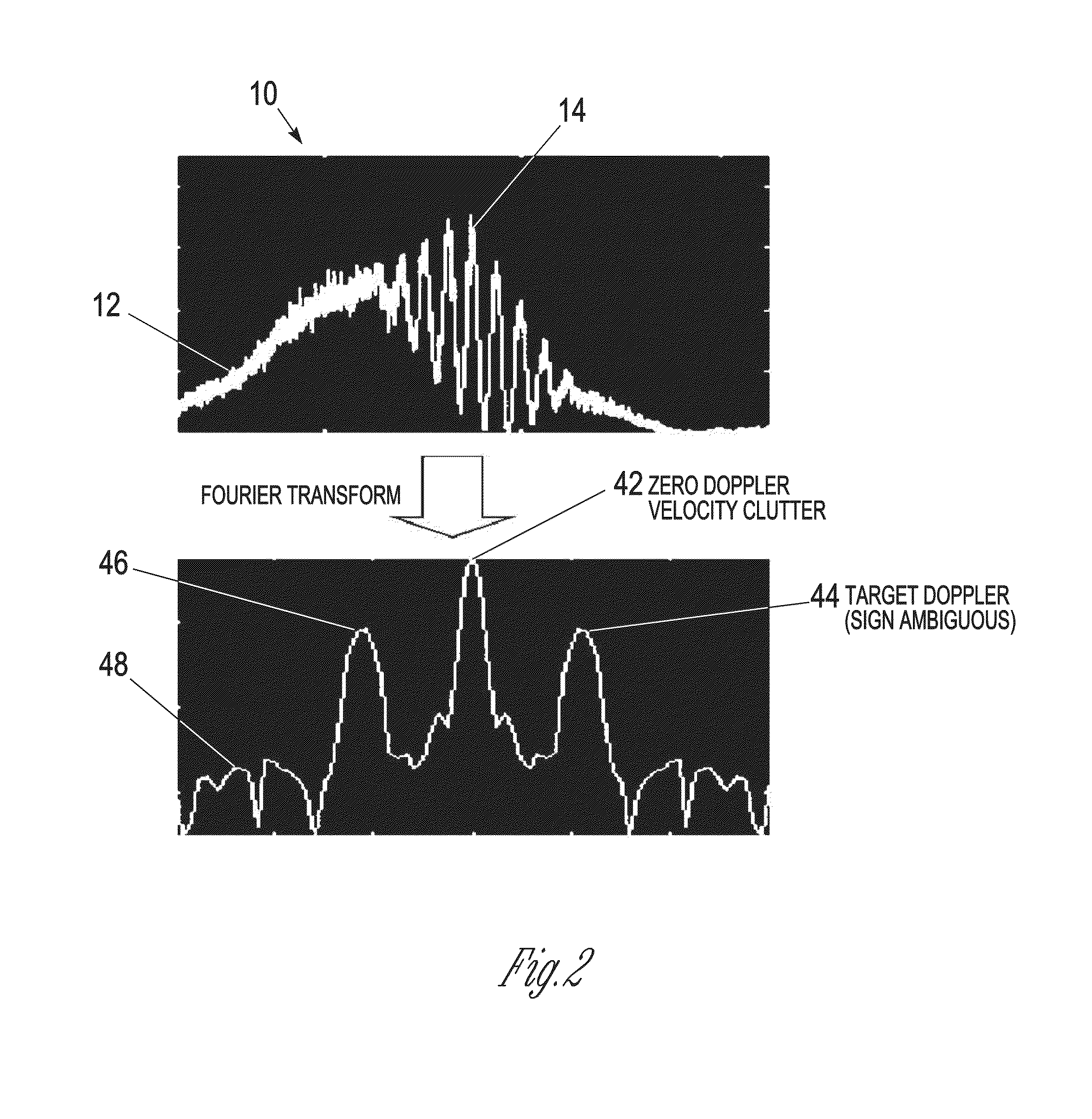Detection of low observable objects in clutter using non-coherent radars
a non-coherent radar and clutter technology, applied in the direction of reradiation, measurement devices, instruments, etc., can solve the problems of not being able to detect, non-coherent radar performance seriously degrades, etc., and achieves a slower antenna rotation rate and increased beamwidth
- Summary
- Abstract
- Description
- Claims
- Application Information
AI Technical Summary
Benefits of technology
Problems solved by technology
Method used
Image
Examples
Embodiment Construction
[0048]In U.S. Pat. No. 8,026,844, Fox, et. al., teaches the use of non-coherent radars for wide-area and persistent surveillance. The methods and apparatuses of the present invention were motivated and developed by the need to detect and track small and / or slowly moving targets over land, such as people, with low-cost, commercial off-the-shelf (COTS), non-coherent X-band maritime radar. The method and apparatus of the present invention allow detection and tracking to be effective in the presence of moderate and high clutter. In fact, clutter conditions, including the presence of strong clutter, are required for the method to work. This processing method can be combined with the existing processing methods taught in U.S. Pat. No. 8,026,844 for detecting and tracking people under system noise condition or low to moderate clutter conditions. Expensive coherent radars using Doppler processing have been used with varying degrees of success for detecting moving people for this application...
PUM
 Login to View More
Login to View More Abstract
Description
Claims
Application Information
 Login to View More
Login to View More - R&D
- Intellectual Property
- Life Sciences
- Materials
- Tech Scout
- Unparalleled Data Quality
- Higher Quality Content
- 60% Fewer Hallucinations
Browse by: Latest US Patents, China's latest patents, Technical Efficacy Thesaurus, Application Domain, Technology Topic, Popular Technical Reports.
© 2025 PatSnap. All rights reserved.Legal|Privacy policy|Modern Slavery Act Transparency Statement|Sitemap|About US| Contact US: help@patsnap.com



